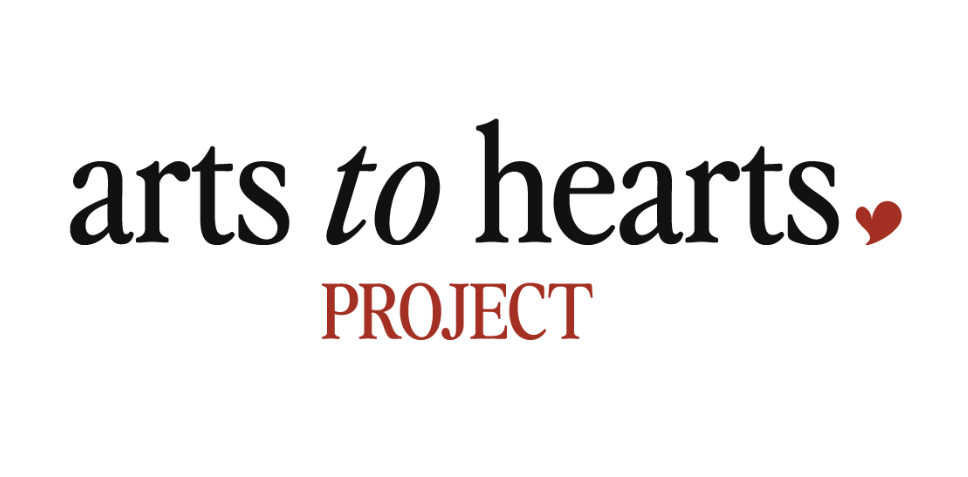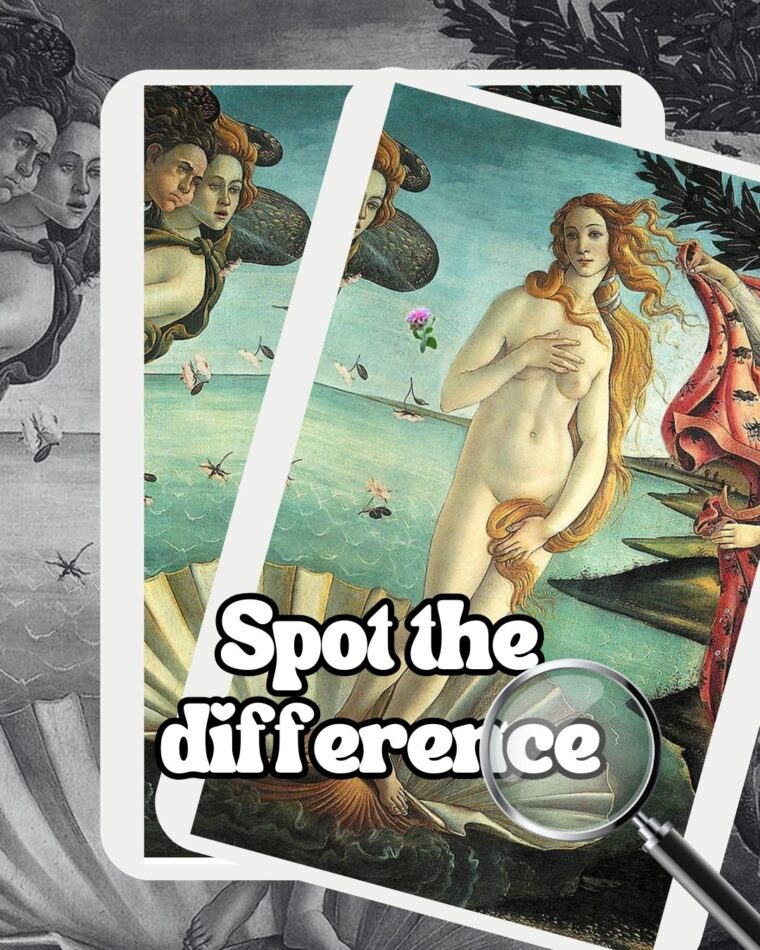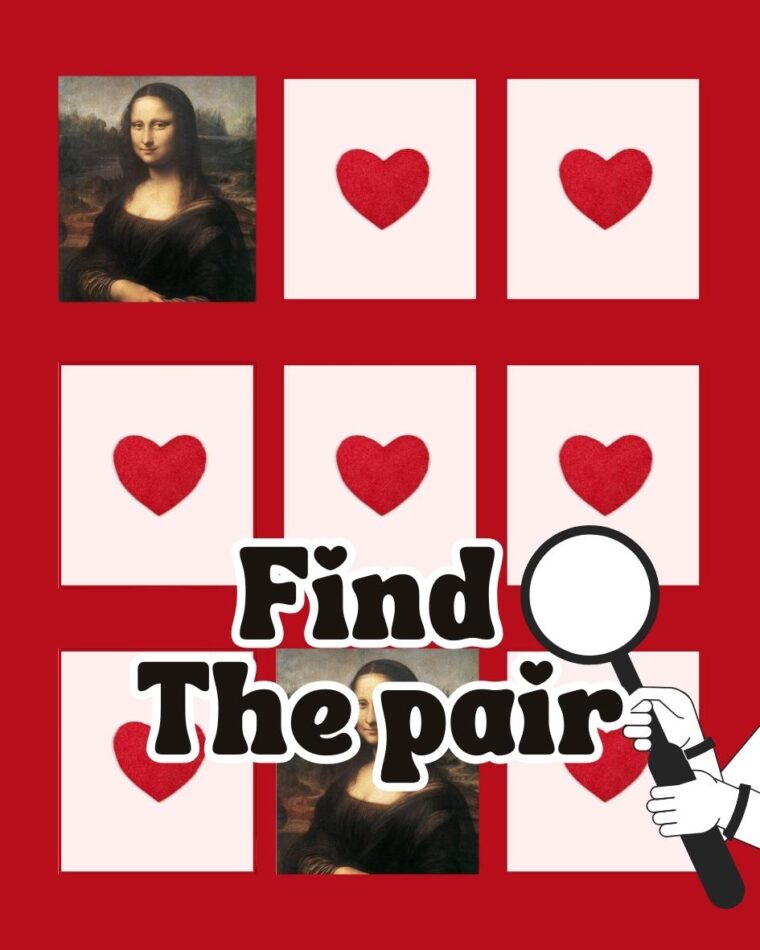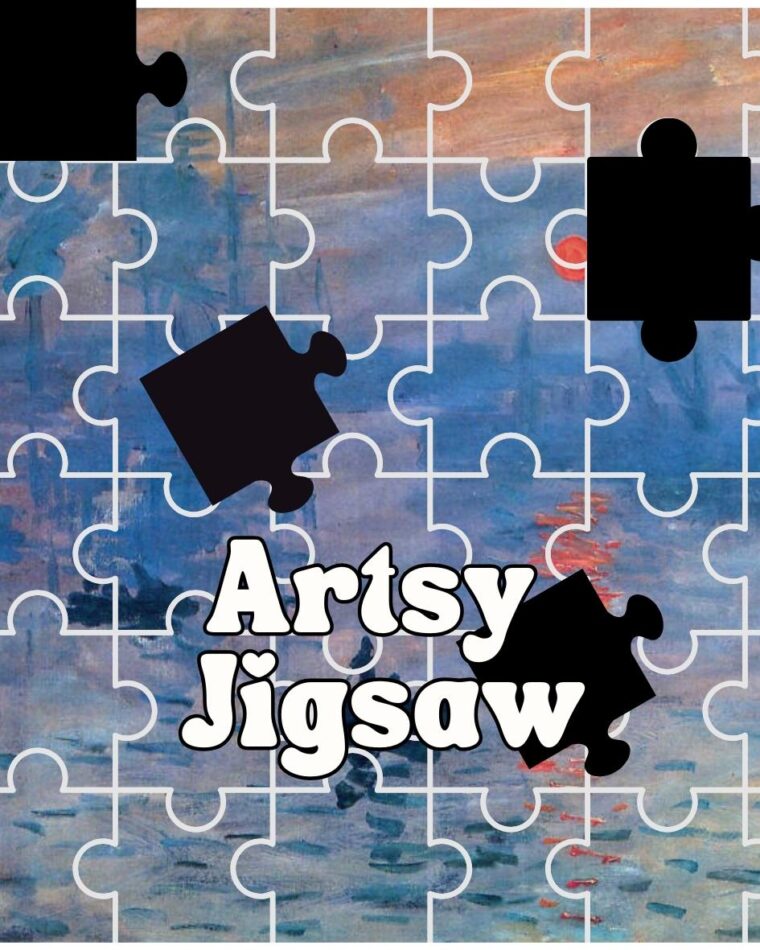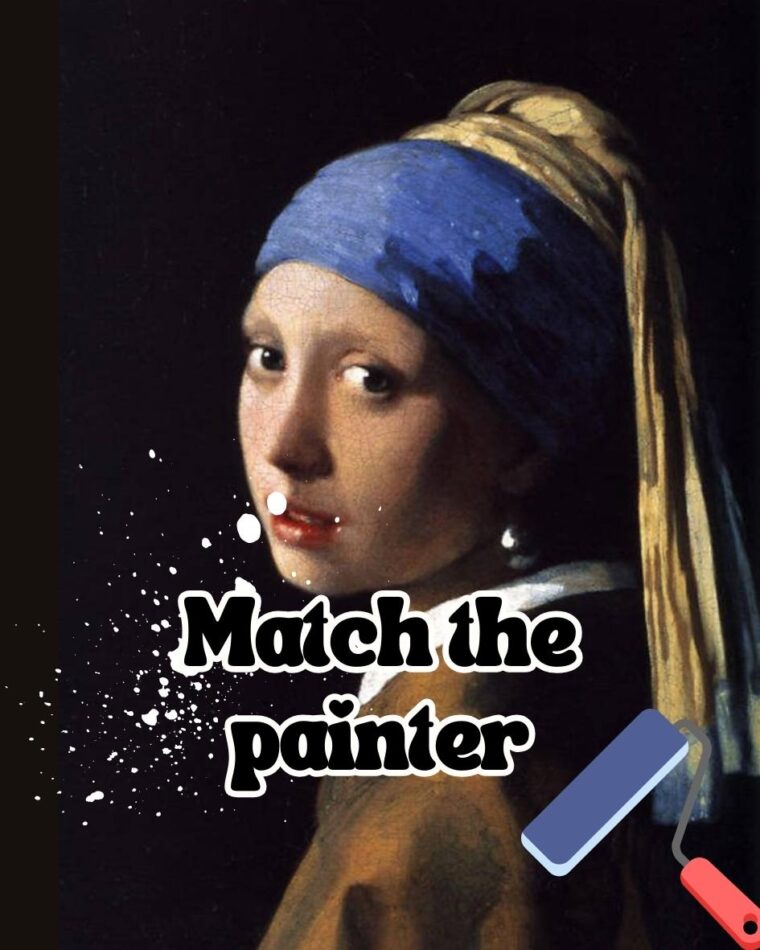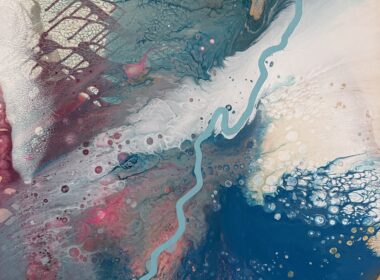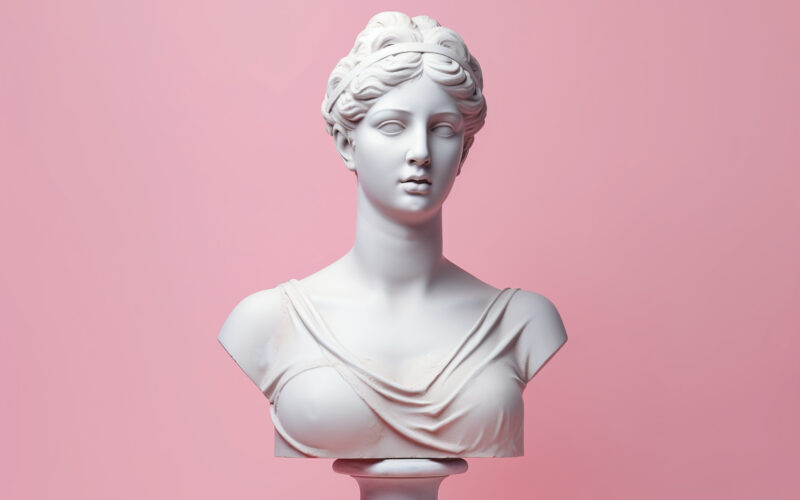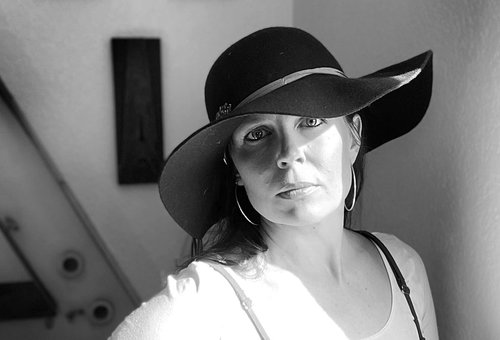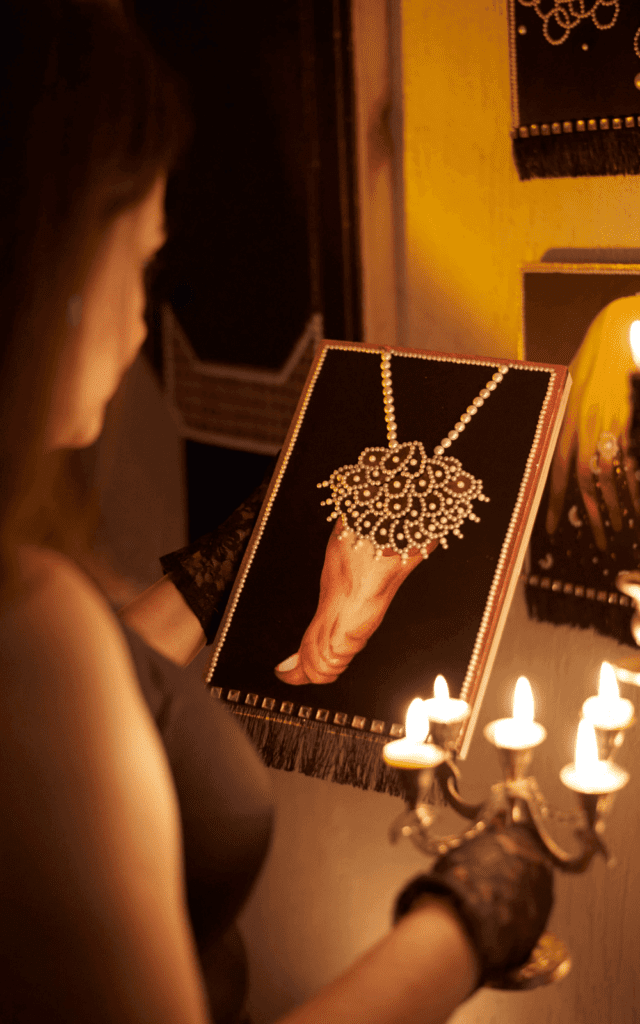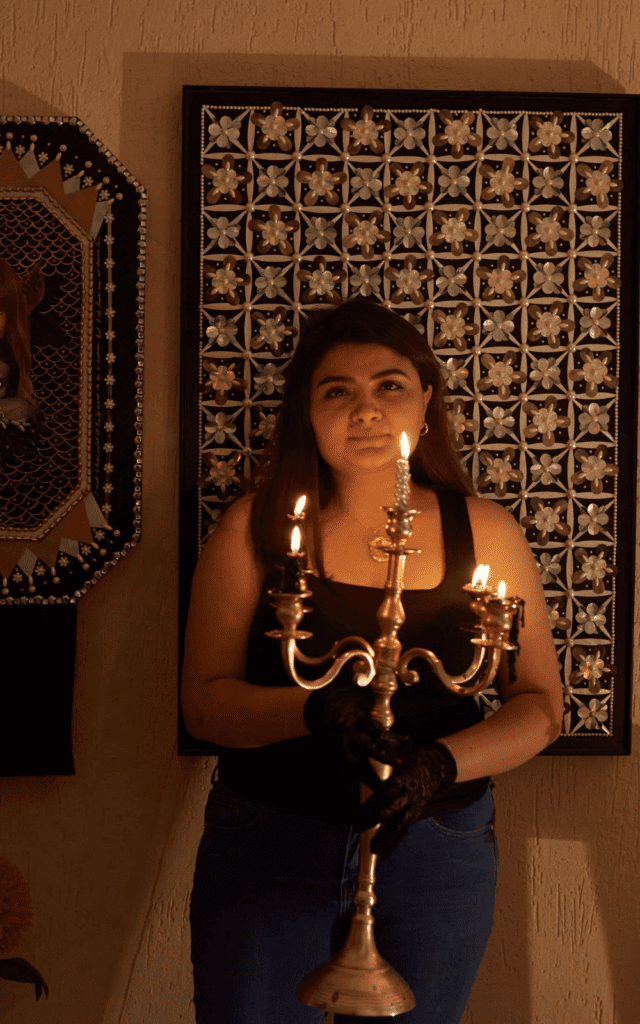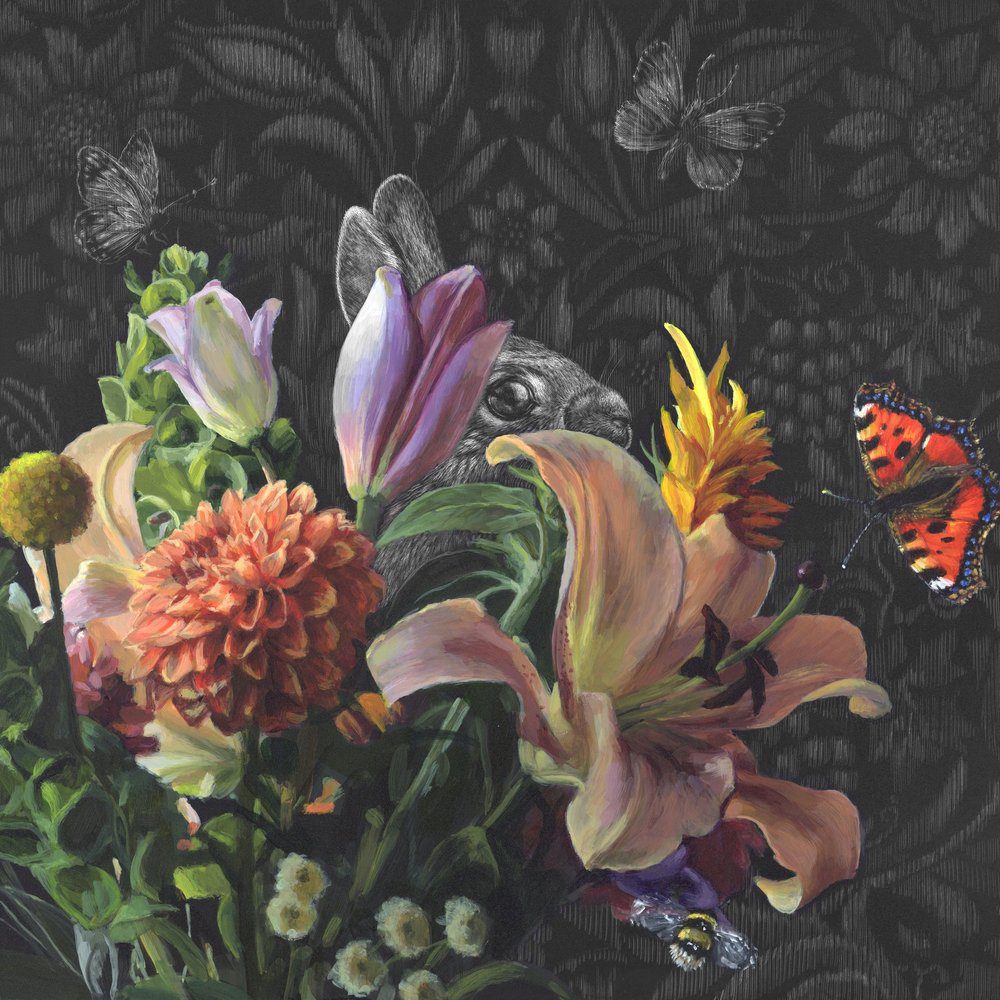
Re: How She Built a Life Around Showing Up Even When It Was Hard | Andrea Ehret
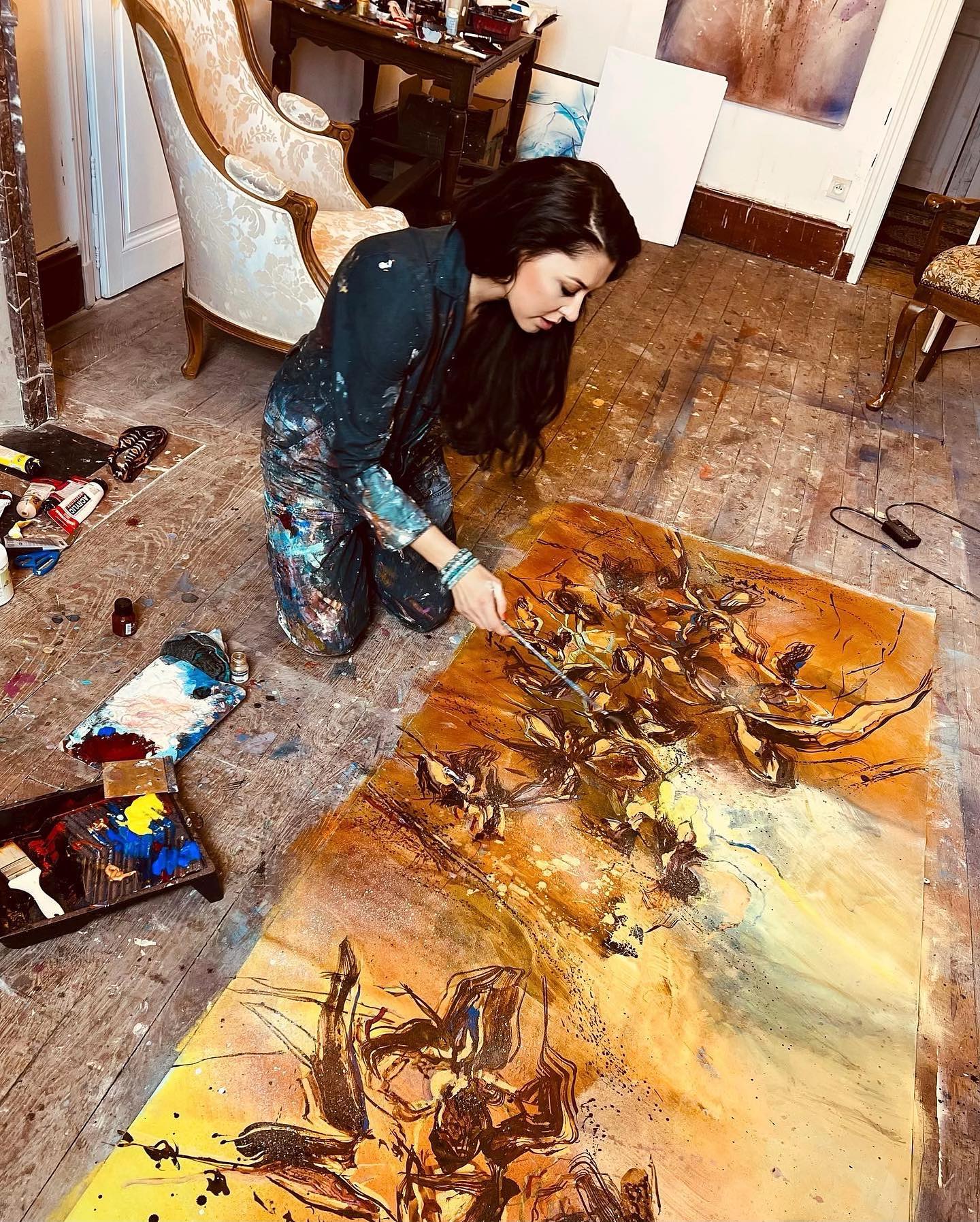

In this episode of the Arts to Hearts Podcast, painter Andrea Ehret sits down with Charuka Arora to talk about how creativity often starts with curiosity—and how it takes time to figure out what feels true in your work. Andrea grew up in Slovakia in a home filled with art, where her parents encouraged her to notice the world in detail—from the shapes of trees to the way light moves through a space. That early habit of paying attention shaped the way she approaches painting today.
She shares what it was like to go through formal training, how hard it can be to shake off the voices of teachers and mentors, and how she eventually began to trust her sense of direction in the studio. Whether working on large abstract canvases or small calligraphic pieces, Andrea talks about the value of slowing down, making space for silence, and letting her process lead the way.
This conversation is an honest look at the in-between moments of creativity—the false starts, the waiting, the small wins—and the quiet confidence that comes from staying with it.
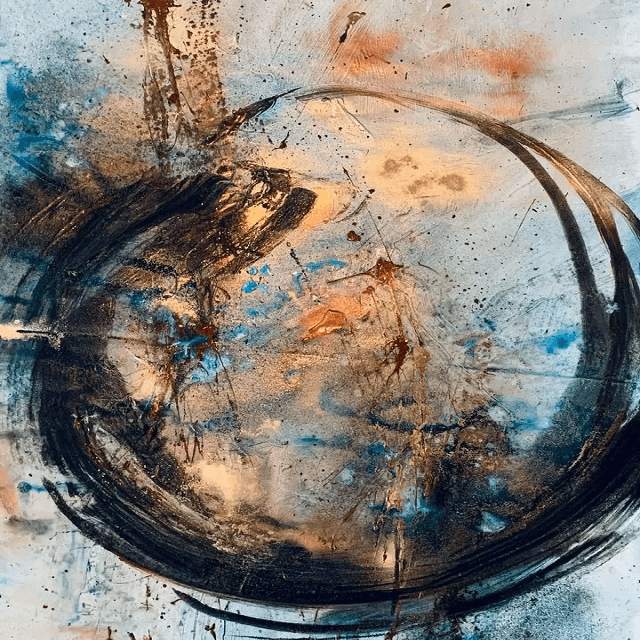
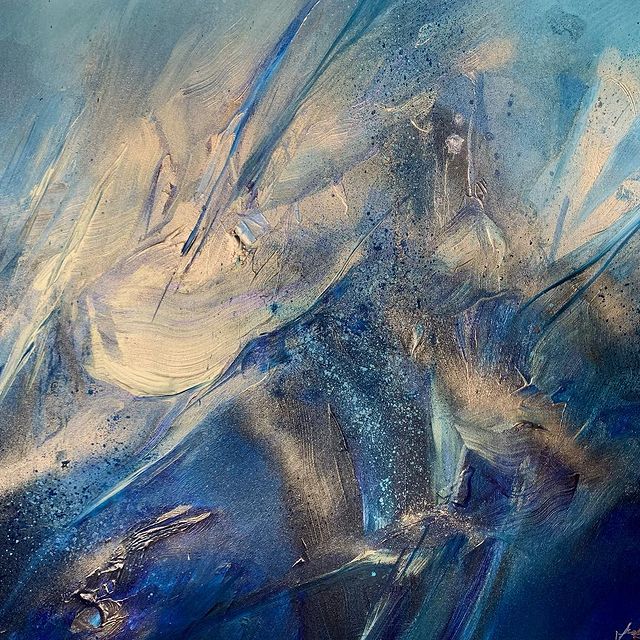
About Andrea Ehret
Slovak artist, art therapist, and performer in Prague, Czech Republic. My artwork mainly concentrates on abstract, expressive oil and mixed media painting. I lead regular international art therapy and painting workshops for children & adults. My approach is strongly connected to my vision of life; I choose life as a tool for self-transformation. I firmly believe art can heal and awaken. My artworks are part of private collections all around the world. I exhibited my art internationally: e.g., in the Czech Republic, Slovakia, Germany, the UK, the USA, the Netherlands, etc.
I am looking for a connection between the visible and invisible worlds. I wish to portray a brimming and fierce life. I throw myself out there. My playful and authentic technique transports my audience through a dream-like experience. While my perceptions and emotions inspire my art pieces, they remain open to the viewer’s interpretation based on their reflection while immersed in a world away from reality.
In my abstract expressive artworks, I often use impasto layers, acrylic, oil, and metal gold or silver pigments on canvas or paper. Exploring the spontaneity of liquid media sometimes makes the process more playful and intuitive. In my latest series, I concentrate on the beauty of life, Mother Earth, botanical motives, and dreams…combined with the inspiration of great poets: Neruda, Rilke, Verlaine, and others.
There is a sense of longing, passion, engaging movement, and contrasting boundaries of light and darkness, sunshine and clouds. I do not worry about where my works stand compared to other artists or art movements.
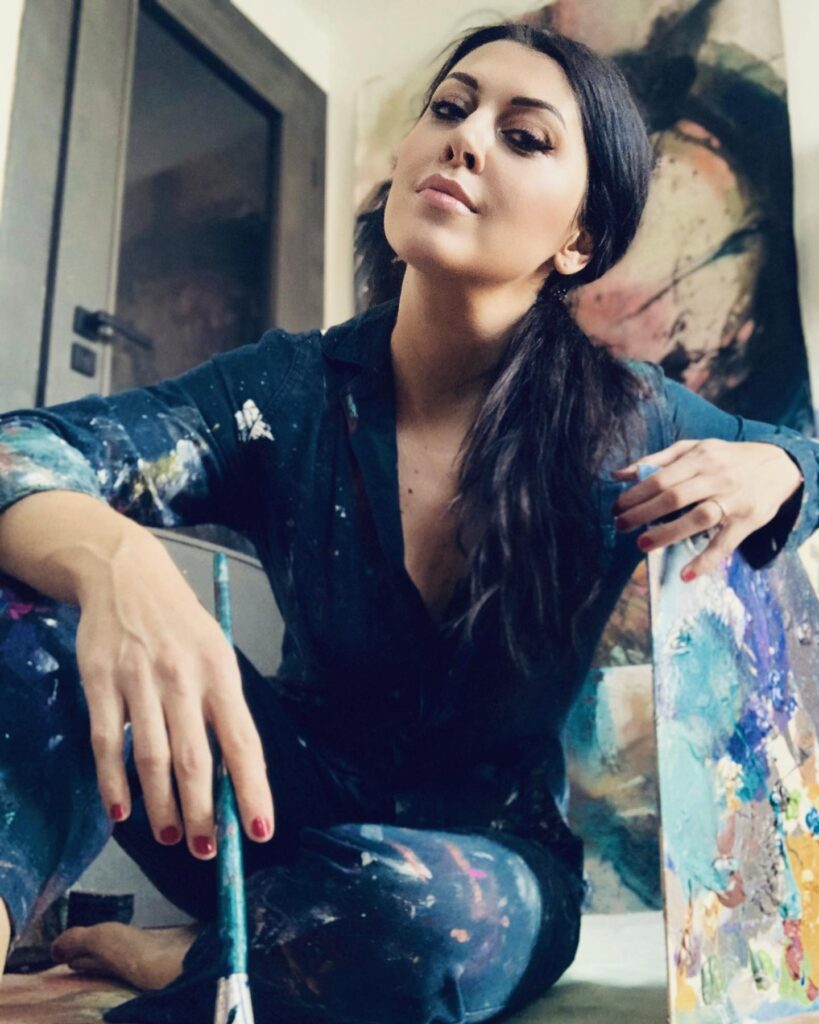
Watch & Listen to this podcast Episode.
Growing Up with Art All Around
Andrea’s creative journey started early—not with a formal decision but with a feeling. Growing up with an architect father and a mother who taught art, she was constantly surrounded by visual cues and creative influence. But what stayed with her most were the quiet lessons in observation. Her father would point out curious shapes and unusual forms in nature or buildings, encouraging her to slow down and look more closely. This habit of noticing would later become the foundation of her creative process.
“I was one of those kids who was constantly amazed,” Andrea says, “by colour, form, and the world around me.” From childhood sketchbooks to school competitions, she was always making something. Though there was never one moment she decided to be an artist, she always felt that art was simply part of who she was.
This is what I want to do: I want to express myself, and I want to express myself in colour.S4 E69
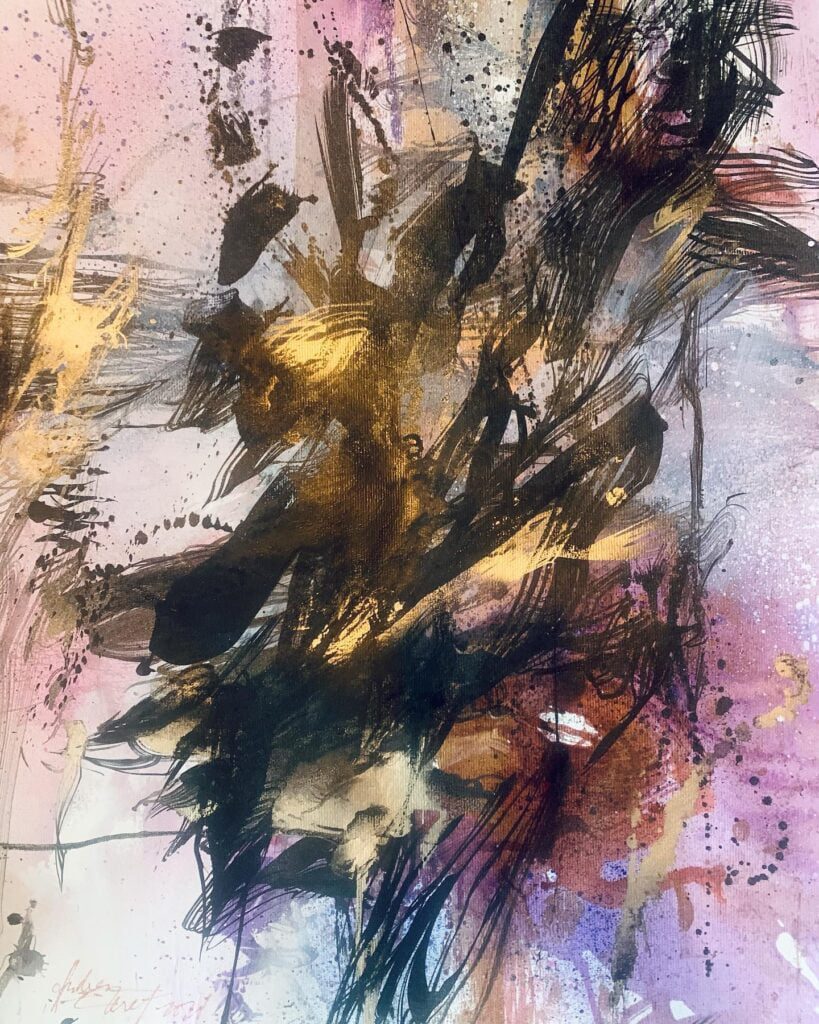
Studying Art and the Struggles That Come After
Andrea went on to study at the Faculty of Arts and Humanities in Slovakia. While education gave her a firm technical grounding, it also came with a side effect many trained artists will recognise—the difficulty of untangling her voice from those who taught her.
After graduating, she found herself carrying the influence of her professors into her studio. Their preferences, ideas, and approaches were woven into her work, even when she tried to avoid it. “It took me years to peel that off,” she shares. “Even though I didn’t want their voice in my work, it stayed with me for a long time.”
Eventually, it was only by painting alone, outside of school, outside of expectations, that she began to discover what she wanted to say.
I think that, whether you want to admit it or not, you always feel whether it’s authentic. You know, you feel it in your heart and in your gut. You know that you feel that you are so connected to yourself while you create that nothing from the outside world can actually achieve that connection with you at that moment. S4 E69
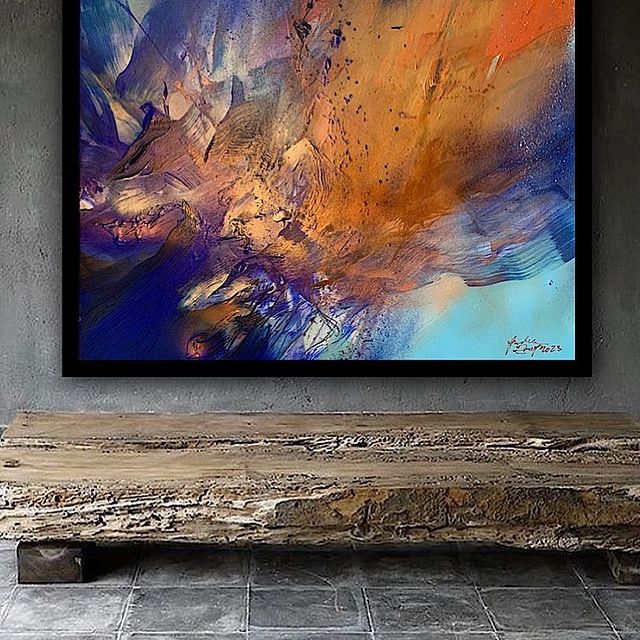
What Authenticity Feels Like
When asked how she found her authenticity as an artist, Andrea answered simply and incredibly accurately: “You just feel it.”
According to her, authenticity isn’t about doing something radically new or untouched by the world—it’s about feeling a sense of connection while creating. “You know when you’re copying. You feel it in your gut,” she says. “And you know when something is truly coming from you.”
She also warns against the trap of chasing outside validation. It’s not about how many likes you get or who praises your work. “It’s about looking at what you made and being able to say, ‘Yes. This feels right. This feels like me.”
Andrea encourages her students to focus on that internal compass, reminding them that what truly resonates with others often starts by resonating with yourself.
That’s when I realised what it was. And it took me a while, I believe years, to get rid of it because, you know, I cou;d actually felt it in my work. There was an imprint of them, even though I didn’t want that. You know, but it did—their voices were so strong that they stayed with me for a while, and then, you know, I just had to take what they said and somehow make it mine, but in a different way.S4 E69
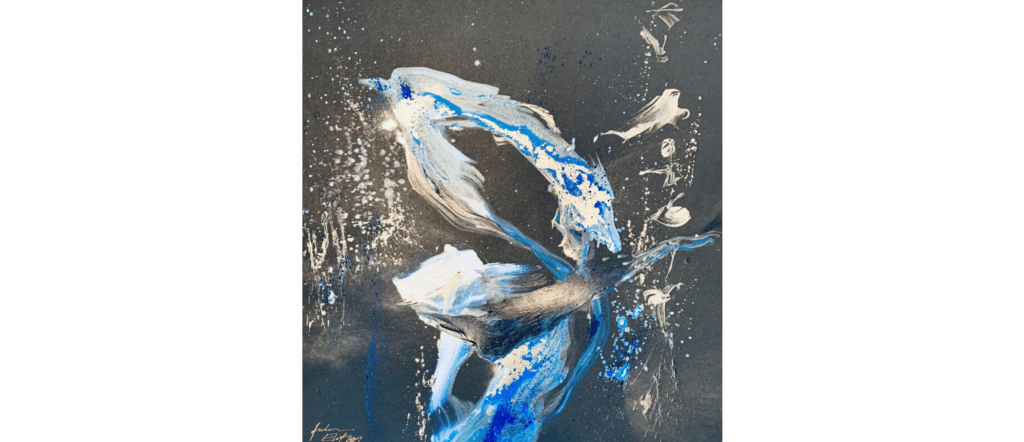
Making Abstract Work: A Process of Listening
One of the most engaging parts of the conversation is when Charuka asks Andrea about her creative process, particularly her abstract work. How does an abstract painter know what they’re creating without a defined subject?
Andrea explains that she approaches her work in two different ways, depending on the type of painting.
For her large-scale acrylic canvases, she often carries an idea with her before starting. She’ll jot down thoughts, make quick sketches, and do some prep. But even then, things shift as the painting unfolds. “The process takes over,” she says. “Sometimes the idea changes midway. Sometimes I need to turn the canvas or try something else because the first approach isn’t working.”
For her minimal calligraphic work, the approach is quieter and more meditative. “I sit in silence, I listen to myself, and then I make a gesture,” she says. These paintings don’t come from plans—they come from stillness. “Sometimes it works, sometimes it’s just noise, and I throw it away. But when it works, it comes from full concentration.”
She works on multiple canvases simultaneously, letting some rest while others evolve. This distance helps her see more clearly what’s working and what’s not. “Sometimes you need to step back to hear the painting better.”
So with the large abstract scale work, I work a little differently than with the calligraphy because the calligraphy is so ink for me; it’s solemnly and solely meditative, and so for those works, I just start by being quiet and listening to myself, and from that moment of silence I would create or execute Brush stroke, execute a gesture. S4 E69
Letting Go of Control, One Layer at a Time
A theme that runs throughout Andrea’s conversation is letting go—letting go of influences, letting go of control, and letting go of the need to explain. Whether she’s changing directions mid-painting or staying quiet long enough to hear what a work is trying to say, her process is a dance between intention and openness.
She doesn’t force meaning or chase perfection. Instead, she follows what feels right in the moment and allows her work to grow alongside her.



Andrea’s story is a quiet nudge to slow down, pay attention, and let things take shape in their own time. Her words remind us that it’s okay not to have everything figured out—that some of the best work happens when we stop chasing results and listen to what’s already there.
Whether you’re just getting started or have been creating for years, this conversation makes space for the questions we all carry: Is this me? Am I forcing it? What if I try something else? Andrea doesn’t offer shortcuts, but she does offer something better—honesty about the ups and downs, and the kind of patience that keeps you grounded through it all.
So if you’re in the middle of figuring things out (or circling back for the hundredth time), know that you’re not alone. Keep showing up, keep noticing, and let the work meet you where you are.
Liked what you read?
Listen to this & other episodes on

